Posted by: Ken @ 5:42 pm
A little more than an hour’s drive from our south Florida home, Corkscrew Swamp is located within the largest remaining virgin Bald Cypress forest in North America. A boardwalk provides access to six distinct habitats: pine flatwood, wet prairie, pond cypress, marsh, lettuce lakes, and bald cypress forest. Enjoy a virtual tour of the 2 1/4 mile boardwalk at this link.
Entrance sign:
Several Painted Buntings were visiting the feeders at the back porch of the Blair interpretive Center: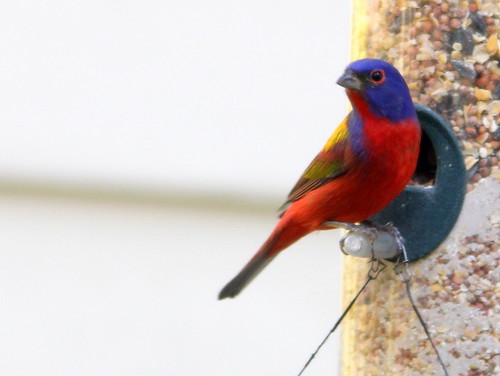
The large and graceful Palamedes Swallowtail is a hallmark species in southern swamps: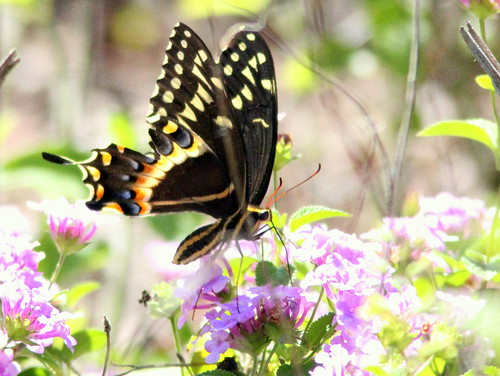
The boardwalk loop begins and ends in the flatwoods, where Slash Pine, Cabbage Palms and palmetto predominate in the dry sandy soil. Several woodpecker species may be expected here. We saw three or four Pileated Woodpeckers, but none of them posed for my camera.
This Pileated Woodpecker appeared right next to the boardwalk during a prior visit to Corkscrew: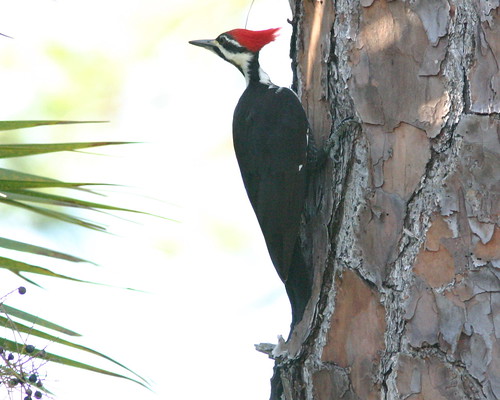
We heard the songs of many White-eyed Vireos, but only this one, in a willow at the edge of the wet prairie, provided a photo opportunity:
Here’s a better view of the vireo’s namesake eye: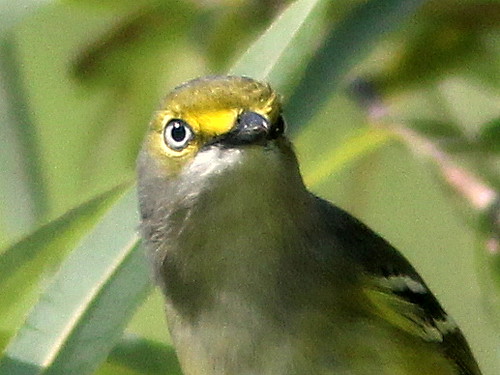
As we crossed the wet prairie, a Red-shouldered Hawk flew over the boardwalk. Note the white comma-shaped patches near its wingtips: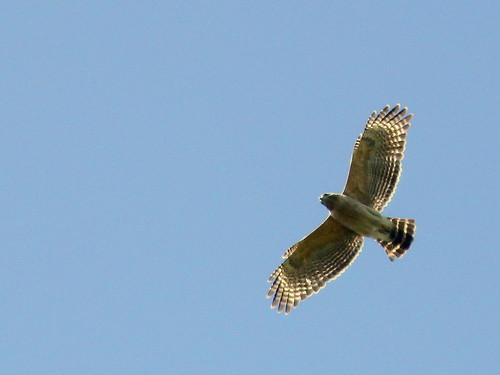
The hawk roosted in a Slash Pine. It is wearing a leg band: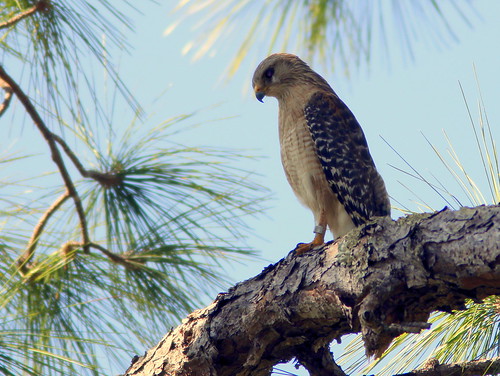
Wild Blue Flag Irises bloomed in the shade of the Pond Cypress trees:
Numerous Common Grackles were busy carrying nest materials. Other small birds abounded. Among them were Northern Cardinals, Northern Parulas, Palm and Pine Warblers, Downy and Red-bellied Woodpeckers, House and Carolina Wrens, Eastern Phoebes, and Blue-headed Vireos.
In the Bald Cypress forest, We saw at least a half dozen Tufted Titmice, and heard the songs and calls of many more:
Although the parula warblers foraged high in the canopy, several Black and White Warblers gleaned the cypress trunks:
Great Crested Flycatchers were quite vocal, but it was difficult to catch sight of them: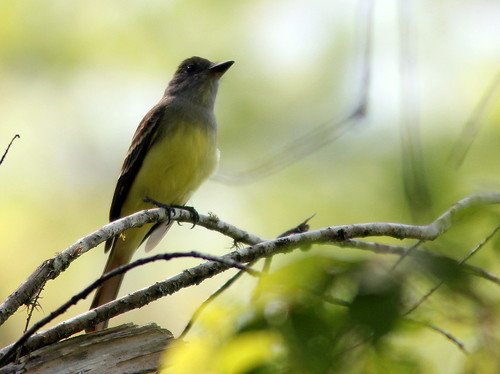
The calls of Red-shouldered Hawks resounded through the forest. This one posed on a cypress branch at the edge of a small clearing: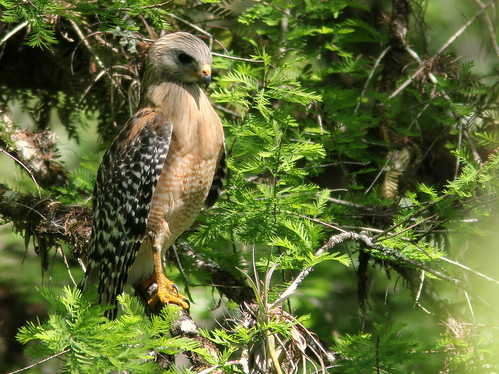
Nearby, a volunteer naturalist pointed out a Red-shoulder’s nest containing two downy chicks:
As the boardwalk skirted the lettuce lakes (actually an open-water slough, its surface coated with aquatic plants), we spotted a drowsy Yellow-crowned Night-Heron: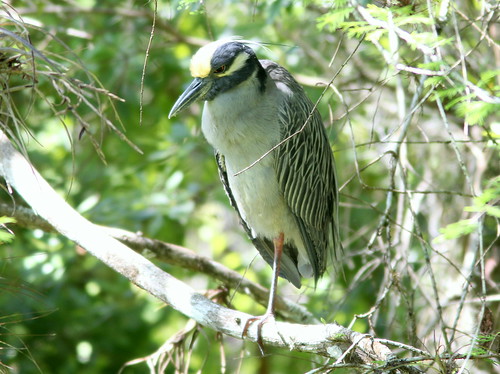
A Great Egret’s white plumage contrasted nicely with the floating water lettuce and duckweed: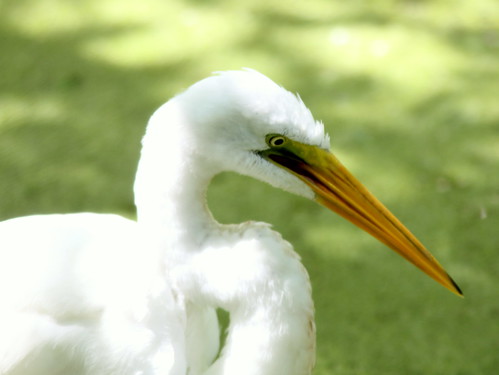
The egret flew up to preen in a small tree, showing off its breeding-season plumes:
Fair game for the herons, a Green Tree Frog hid in the vegetation at the Lettuce Lakes: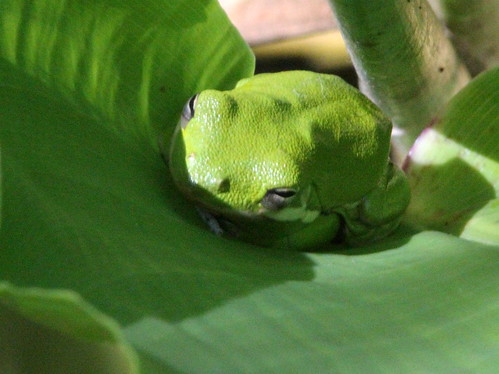
Not far away, a Striped Mud Turtle basked in the sunlight:
A second look at this off-white heron revealed a bluish bill with black tip, characteristic of a juvenile Little Blue Heron: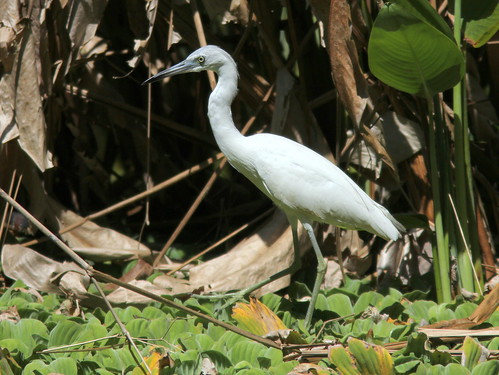
Swallow-tailed Kites spend the nights in large roosts near the sanctuary. Many wheeled overhead, but I found it impossible to capture them through the leaves of the cypress trees.
This is one of my earlier images of this graceful raptor:
Sadly, no Wood Storks were present. This should be the height of their breeding season, but they have failed to breed at Corkscrew for the second season in a row. The reasons for this failure are not entirely understood. This winter’s drought, the worst in 80 years, and near-freezing temperatures in mid-winter very likely contributed to this year’s failure. The winter of 2008-2009 was a banner year for the storks at Corkscrew. Visit this link for historic records and more information about the exacting conditions required for successful reproduction of the storks: Wood Stork Nesting Data for Corkscrew Swamp Sanctuary, Also see Struggling Storks, which discusses their unique habitat requirements.
Over a year ago, a large number of immature Wood Storks, products of the successful 2008-2009 season, spilled over into our neighborhood, decorating this dead tree near our home:
I shared the joy of the sightings with John and Barry on this delightful morning:













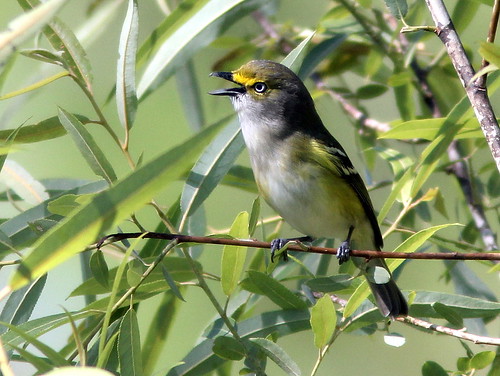
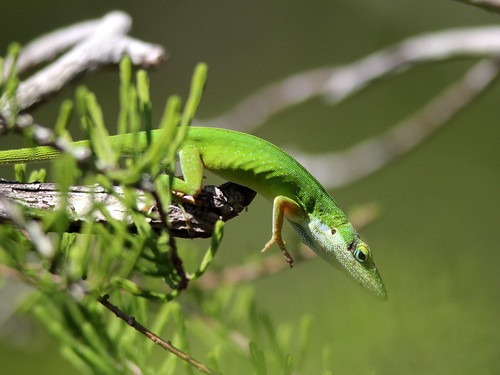
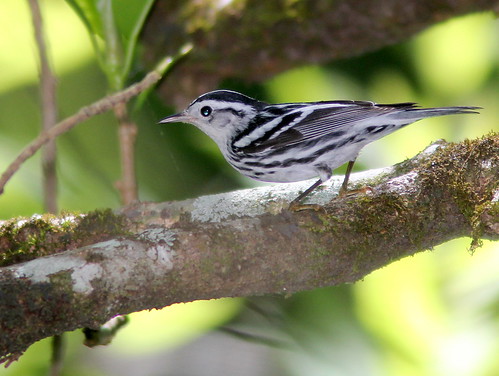
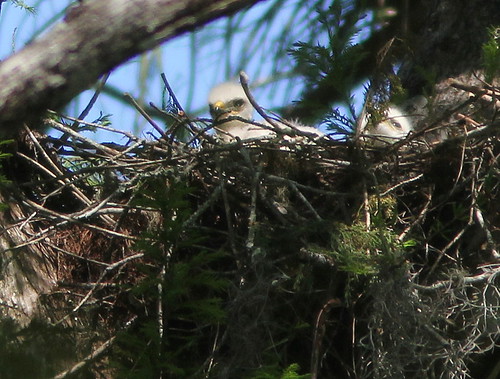
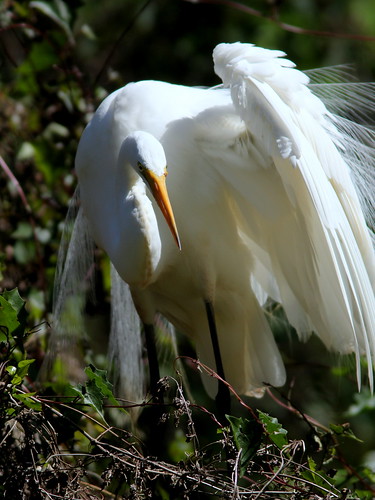

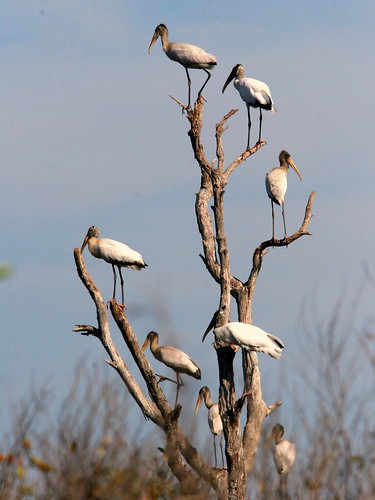
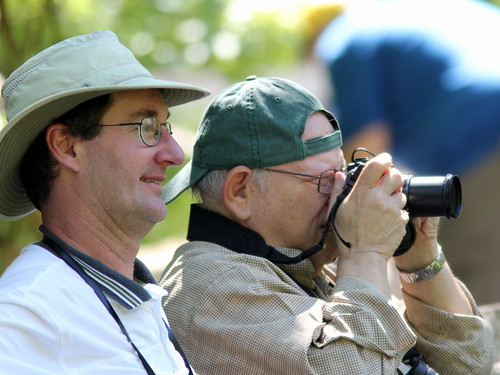
March 21st, 2011 at 10:42 pm W O W ! ! ! the Painted Bunting is a heart-stopping bird! I still need to see one, great picture!
March 23rd, 2011 at 8:47 am I don’t know where to start Ken. All your photos are beautiful, as always. The Painted Bunting is so tropical, it would be a lifer for me and I love your photos of the Pileated Woodpecker (I visited your Flickr page to check them out because when I clicked on the image in your post, it said that that particular image was private)! The White-eyed Vireo is just gorgeous and you show my favorite Buteo perfectly with the Red-shouldered Hawk photos. I’m still searching for the nest they have built near me. Like the Red-shouldered Hawk, the flycatchers are always vocalizing but like you said, isn’t it strange that they are so hard to locate when you hear them? I really enjoyed the Heron shots and that photo of the Wood Storks decorating the tree is absolutely superb! I will have to get back to check out the virtual tour of the swamp. It looks like and incredible place to see all sorts of wildlife. Thanks for your personal tour.
March 23rd, 2011 at 10:46 am Superb set. Some stunning birds, and great pictures. I love that Red-shouldered Hawk; a beauty.
March 23rd, 2011 at 4:57 pm You have some beautiful wildlife in your part of the World. Great images many thanks for sharing.
March 23rd, 2011 at 7:20 pm An astounding tour de force! I love posts that give a feel of the splendor of a good day of bird watching and photography. This is about as good as it gets. Bravo!
March 24th, 2011 at 2:11 am Stunning! What a great set of images. Well done! Have a nice day.
March 24th, 2011 at 8:27 am Wow! I’m overwhelmed! What a great collection of marvelous photos!
March 25th, 2011 at 1:23 pm That is excellent shot of the White eyed Vireo in fact I keep going back to it to look at it. The blog was fantastic as always. Hope you and Mary Lou have a great weekend.